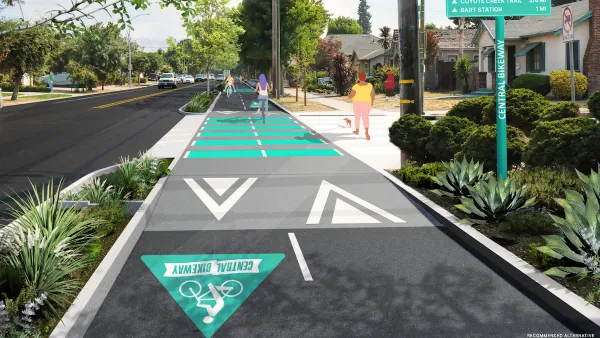The subject of a recent summit hosted by software maker Esri, Larry Greenemeier explains the application of Geodesign to help predict and manage the increasingly complex intersection of design, land use, ecology, and climate change.
"Geodesign is an approach to city planning, land use and natural resource management that takes into account the tendency in recent years to overdevelop land at the expense of natural habitats, as well as population growth and climate change, which have left communities increasingly vulnerable to natural disasters," explains Greenemeier, who considers whether the design framework could help protect us from natural disasters like Superstorm Sandy.
Utilizing the advances in information collection, analysis, and visualization made possible by GIS, Geodesign provides the framework to "understand our landscape and [the] impact of our design decisions,” says Tom Fisher, dean of the University of Minnesota’s College of Design.
"Careful study of GIS data—which includes weather data but also takes into account population demographics, land use and a variety of other factors—could uncover clues about the likely intensity and impact of future storms as well as the extent to which zoning decisions can mitigate potential damage, according to Fisher, the emcee and moderator of this week’s Geodesign Summit hosted by GIS mapping software maker Esri at the company’s Redlands, Calif., headquarters."
Greeenemeier concludes with a short description of some of the innovative geodesign projects underway throughout the U.S.
FULL STORY: What Is Geodesign–and Can It Protect Us from Natural Disasters?

Planetizen Federal Action Tracker
A weekly monitor of how Trump’s orders and actions are impacting planners and planning in America.

Silicon Valley ‘Bike Superhighway’ Awarded $14M State Grant
A Caltrans grant brings the 10-mile Central Bikeway project connecting Santa Clara and East San Jose closer to fruition.

Amtrak Cutting Jobs, Funding to High-Speed Rail
The agency plans to cut 10 percent of its workforce and has confirmed it will not fund new high-speed rail projects.

Trump Executive Order on Homelessness Calls for Forced Institutionalization
The order seeks to remove legal precedents and consent decrees that prevent cities from moving unhoused people from the street to treatment centers.

Cash-Strapped RIPTA Unveils Massive Cuts to Bus Service Across the State
Just 9 bus routes untouched as agency proposes to slash trips but CEO remains mum on potential layoffs.

How a Truck Tax Could Save the Highway Trust Fund
The freight trucking industry is a prime candidate for a mileage tax that would boost road maintenance revenue.
Urban Design for Planners 1: Software Tools
This six-course series explores essential urban design concepts using open source software and equips planners with the tools they need to participate fully in the urban design process.
Planning for Universal Design
Learn the tools for implementing Universal Design in planning regulations.
Yukon Government
Caltrans
New Jersey Institute of Technology
Mpact (founded as Rail~Volution)
City of Camden Redevelopment Agency
City of Norman, Oklahoma
City of Portland
City of Laramie



























